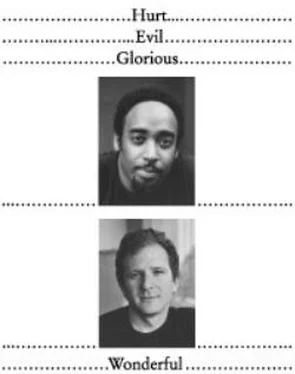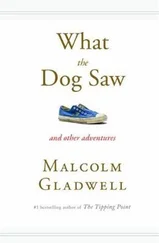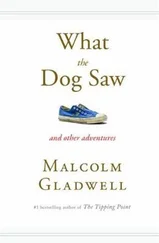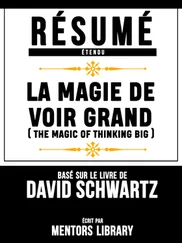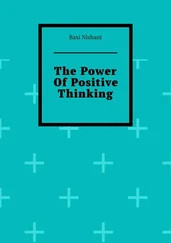Malcolm Gladwell - Blink - The Power of Thinking Without Thinking
Здесь есть возможность читать онлайн «Malcolm Gladwell - Blink - The Power of Thinking Without Thinking» весь текст электронной книги совершенно бесплатно (целиком полную версию без сокращений). В некоторых случаях можно слушать аудио, скачать через торрент в формате fb2 и присутствует краткое содержание. Жанр: Культурология, Психология, на английском языке. Описание произведения, (предисловие) а так же отзывы посетителей доступны на портале библиотеки ЛибКат.
- Название:Blink: The Power of Thinking Without Thinking
- Автор:
- Жанр:
- Год:неизвестен
- ISBN:нет данных
- Рейтинг книги:3 / 5. Голосов: 1
-
Избранное:Добавить в избранное
- Отзывы:
-
Ваша оценка:
- 60
- 1
- 2
- 3
- 4
- 5
Blink: The Power of Thinking Without Thinking: краткое содержание, описание и аннотация
Предлагаем к чтению аннотацию, описание, краткое содержание или предисловие (зависит от того, что написал сам автор книги «Blink: The Power of Thinking Without Thinking»). Если вы не нашли необходимую информацию о книге — напишите в комментариях, мы постараемся отыскать её.
Blink: The Power of Thinking Without Thinking — читать онлайн бесплатно полную книгу (весь текст) целиком
Ниже представлен текст книги, разбитый по страницам. Система сохранения места последней прочитанной страницы, позволяет с удобством читать онлайн бесплатно книгу «Blink: The Power of Thinking Without Thinking», без необходимости каждый раз заново искать на чём Вы остановились. Поставьте закладку, и сможете в любой момент перейти на страницу, на которой закончили чтение.
Интервал:
Закладка:
The videotape of Bill and Sue’s discussion seems, at least at first, to be a random sample of a very ordinary kind of conversation that couples have all the time. No one gets angry. There are no scenes, no breakdowns, no epiphanies. “I’m just not a dog person” is how Bill starts things off, in a perfectly reasonable tone of voice. He complains a little bit—but about the dog, not about Susan. She complains, too, but there are also moments when they simply forget that they are supposed to be arguing. When the subject of whether the dog smells comes up, for example, Bill and Sue banter back and forth happily, both with a half smile on their lips.
Sue: Sweetie! She’s not smelly . . .
Bill: Did you smell her today?
Sue: I smelled her. She smelled good. I petted her, and my hands didn’t stink or feel oily. Your hands have never smelled oily.
Bill: Yes, sir.
Sue: I’ve never let my dog get oily.
Bill: Yes, sir. She’s a dog.
Sue: My dog has never gotten oily. You’d better be careful.
Bill: No, you’d better be careful.
Sue: No, you’d better be careful. . . . Don’t call my dog oily, boy.
How much do you think can be learned about Sue and Bill’s marriage by watching that fifteen-minute videotape? Can we tell if their relationship is healthy or unhealthy? I suspect that most of us would say that Bill and Sue’s dog talk doesn’t tell us much. It’s much too short. Marriages are buffeted by more important things, like money and sex and children and jobs and in-laws, in constantly changing combinations. Sometimes couples are very happy together. Some days they fight. Sometimes they feel as though they could almost kill each other, but then they go on vacation and come back sounding like newlyweds. In order to “know” a couple, we feel as though we have to observe them over many weeks and months and see them in every state—happy, tired, angry, irritated, delighted, having a nervous breakdown, and so on—and not just in the relaxed and chatty mode that Bill and Sue seemed to be in. To make an accurate prediction about something as serious as the future of a marriage—indeed, to make a prediction of any sort—it seems that we would have to gather a lot of information and in as many different contexts as possible.
But John Gottman has proven that we don’t have to do that at all. Since the 1980s, Gottman has brought more than three thousand married couples—just like Bill and Sue—into that small room in his “love lab” near the University of Washington campus. Each couple has been videotaped, and the results have been analyzed according to something Gottman dubbed SPAFF (for specific affect), a coding system that has twenty separate categories corresponding to every conceivable emotion that a married couple might express during a conversation. Disgust, for example, is 1, contempt is 2, anger is 7, defensiveness is 10, whining is 11, sadness is 12, stonewalling is 13, neutral is 14, and so on. Gottman has taught his staff how to read every emotional nuance in people’s facial expressions and how to interpret seemingly ambiguous bits of dialogue. When they watch a marriage videotape, they assign a SPAFF code to every second of the couple’s interaction, so that a fifteen-minute conflict discussion ends up being translated into a row of eighteen hundred numbers—nine hundred for the husband and nine hundred for the wife. The notation “7, 7, 14, 10, 11, 11,” for instance, means that in one six-second stretch, one member of the couple was briefly angry, then neutral, had a moment of defensiveness, and then began whining. Then the data from the electrodes and sensors is factored in, so that the coders know, for example, when the husband’s or the wife’s heart was pounding or when his or her temperature was rising or when either of them was jiggling in his or her seat, and all of that information is fed into a complex equation.
On the basis of those calculations, Gottman has proven something remarkable. If he analyzes an hour of a husband and wife talking, he can predict with 95 percent accuracy whether that couple will still be married fifteen years later. If he watches a couple for fifteen minutes, his success rate is around 90 percent. Recently, a professor who works with Gottman named Sybil Carrère, who was playing around with some of the videotapes, trying to design a new study, discovered that if they looked at only three minutes of a couple talking, they could still predict with fairly impressive accuracy who was going to get divorced and who was going to make it. The truth of a marriage can be understood in a much shorter time than anyone ever imagined.
John Gottman is a middle-aged man with owl-like eyes, silvery hair, and a neatly trimmed beard. He is short and very charming, and when he talks about something that excites him—which is nearly all the time—his eyes light up and open even wider. During the Vietnam War, he was a conscientious objector, and there is still something of the ’60s hippie about him, like the Mao cap he sometimes wears over his braided yarmulke. He is a psychologist by training, but he also studied mathematics at MIT, and the rigor and precision of mathematics clearly moves him as much as anything else. When I met Gottman, he had just published his most ambitious book, a dense five-hundred-page treatise called The Mathematics of Divorce, and he attempted to give me a sense of his argument, scribbling equations and impromptu graphs on a paper napkin until my head began to swim.
Gottman may seem to be an odd example in a book about the thoughts and decisions that bubble up from our unconscious. There’s nothing instinctive about his approach. He’s not making snap judgments. He’s sitting down with his computer and painstakingly analyzing videotapes, second by second. His work is a classic example of conscious and deliberate thinking. But Gottman, it turns out, can teach us a great deal about a critical part of rapid cognition known as thin-slicing. “Thin-slicing” refers to the ability of our unconscious to find patterns in situations and behavior based on very narrow slices of experience. When Evelyn Harrison looked at the kouros and blurted out, “I’m sorry to hear that,” she was thin-slicing; so were the Iowa gamblers when they had a stress reaction to the red decks after just ten cards.
Thin-slicing is part of what makes the unconscious so dazzling. But it’s also what we find most problematic about rapid cognition. How is it possible to gather the necessary information for a sophisticated judgment in such a short time? The answer is that when our unconscious engages in thin-slicing, what we are doing is an automated, accelerated unconscious version of what Gottman does with his videotapes and equations. Can a marriage really be understood in one sitting? Yes it can, and so can lots of other seemingly complex situations. What Gottman has done is to show us how.
I watched the videotape of Bill and Sue with Amber Tabares, a graduate student in Gottman’s lab who is a trained SPAFF coder. We sat in the same room that Bill and Sue used, watching their interaction on a monitor. The conversation began with Bill. He liked their old dog, he said. He just didn’t like their new dog. He didn’t speak angrily or with any hostility. It seemed like he genuinely just wanted to explain his feelings.
If we listened closely, Tabares pointed out, it was clear that Bill was being very defensive. In the language of SPAFF, he was cross-complaining and engaging in “yes-but” tactics—appearing to agree but then taking it back. Bill was coded as defensive, as it turned out, for forty of the first sixty-six seconds of their conversation. As for Sue, while Bill was talking, on more than one occasion she rolled her eyes very quickly, which is a classic sign of contempt. Bill then began to talk about his objection to the pen where the dog lives. Sue replied by closing her eyes and then assuming a patronizing lecturing voice. Bill went on to say that he didn’t want a fence in the living room. Sue said, “I don’t want to argue about that,” and rolled her eyes—another indication of contempt. “Look at that,” Tabares said. “More contempt. We’ve barely started and we’ve seen him be defensive for almost the whole time, and she has rolled her eyes several times.”
Читать дальшеИнтервал:
Закладка:
Похожие книги на «Blink: The Power of Thinking Without Thinking»
Представляем Вашему вниманию похожие книги на «Blink: The Power of Thinking Without Thinking» списком для выбора. Мы отобрали схожую по названию и смыслу литературу в надежде предоставить читателям больше вариантов отыскать новые, интересные, ещё непрочитанные произведения.
Обсуждение, отзывы о книге «Blink: The Power of Thinking Without Thinking» и просто собственные мнения читателей. Оставьте ваши комментарии, напишите, что Вы думаете о произведении, его смысле или главных героях. Укажите что конкретно понравилось, а что нет, и почему Вы так считаете.
